A mysterious manuscript has surfaced containing the truth about the creatures of Philippine folklore.
What does it take to bring readers into the world of a 19th century explorer’s documentations of Philippine beasts and creatures? A great story, vivid descriptions and a team of creative and talented artists. This is exactly what has been done with “The Lost Journal of Alejandro Pardo”. In our last article we interviewed Budjette Tan and David Hontiveros about their process in creating such an engaging tale. We were also lucky enough to delve into the minds of the artists who brought life to the story and created some unique, practical and even horrifying new images for the familiar and rare mystical beings of the Philippines.
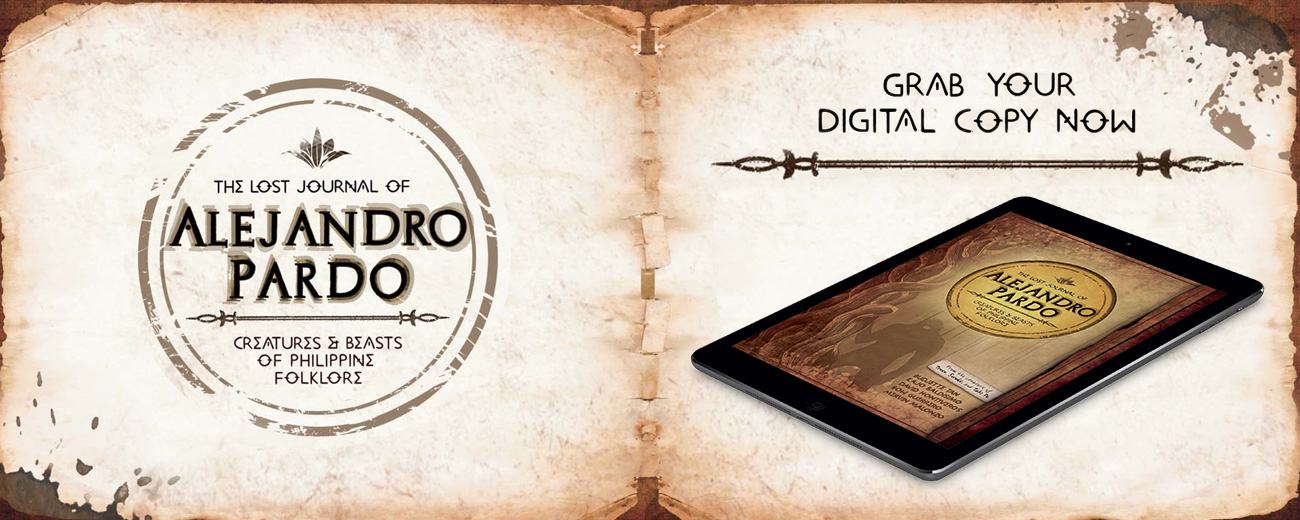
Here is the interview with artists, Bow Guerrero (Mikey Recio & The Secret of the Demon Dungeon), Kajo Baldisimo (Trese) and Mervin Malonzo (Tabi-Po).
Could you tell us a little but about how your involvement in the journal came about?
BG: I heard about the project from Budjette. He mentioned that Summit wanted to do a book about Philippine Mythological creatures. The moment I heard that, I committed to the project. He also mentioned that aside from him, I would be working with David, Kajo, and Mervin. That was an opportunity I couldn’t miss. These guys are the best in the business. I still feel lucky and honored that I was able to work with them as one of the illustrators.
KB: Working with Budj on TRESE, I was one of the artists he immediately recruited to help with the book.
MM: I’m not sure who originally thought of this project but when Budj told me about it, I immediately said yes because it looks fun. I love coming up with new monsters and re-interpreting old ones – especially if it comes from our mythology.
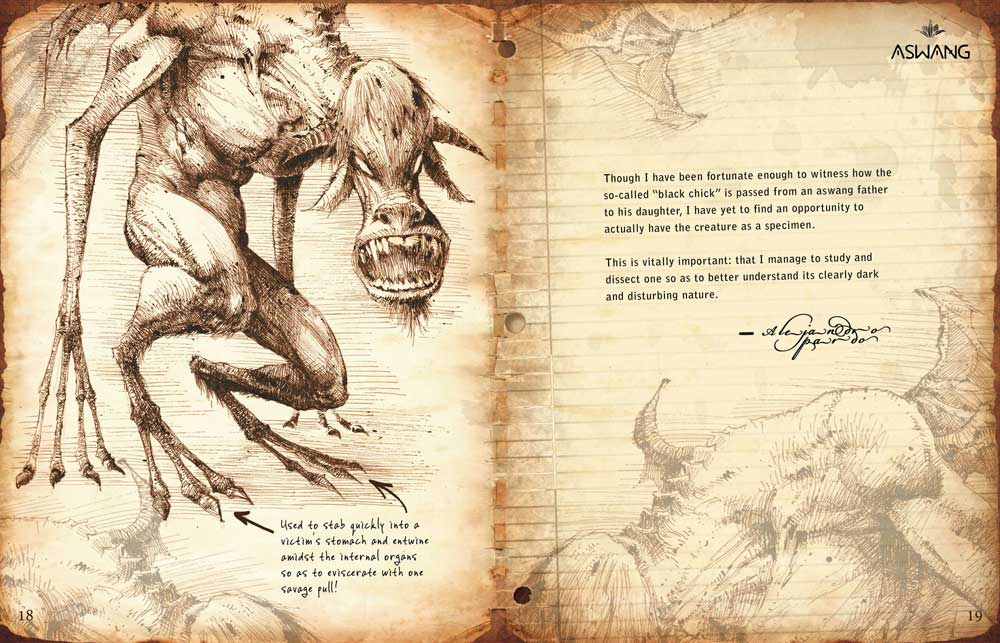
There really aren’t a lot of visual references for the creatures of the Philippines. What is the process and some of the ingredients that goes into visualizing such beings?
BG: A lot of the creatures are based on animals or have animal-like features. I just pushed those features. I didn’t want them to look too fantastical. I wanted the creatures to retain those animalistic traits. The idea was, if you saw these creatures running in a forest you’d do a double take.
For the human-like creatures…like the Siokoy and Sirena..I wanted to put a bit of logic. The Siokoy is basically a fish with limbs. The Sirena (which has mammary glands) is more dolphin-like.
KB: My interpretation of the monsters were helped greatly by Budj’s and David’s descriptions. I added a few imagined touches of my own after I delivered all the details they required.
MM: What I love about Dave’s and Budj’s descriptions of the monsters is it is composed in such a way that it tells a story rather than just a bunch of encyclopedic entries. Their texts alone already paint an image in my mind on how the creatures would look. I try to capture those images on paper. Sometimes, I research online to see how other artists rendered those creatures and I would intentionally veer away from that direction. For example, the Alan is often depicted as a foxbat which bores me to death because it actually exists in the real world. I do not want to draw a real animal so I made mine anthropomorphic so the backward hands and feet would look more grotesque. I also intentionally did not render any clothes on the creatures except for the enkantado/enkantada because I do not think that these creatures would care to dress themselves as humans unless that’s part of their trick.
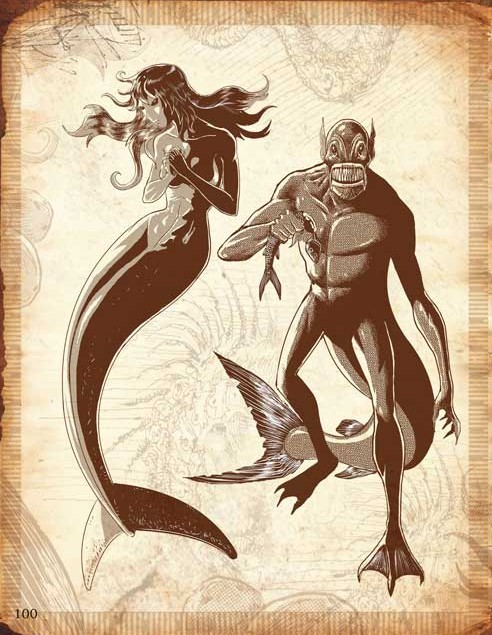
What are some of the creatures we will see from you in the journal? Any favorites?
BG: The favorite ones I did are the Mandurugo and Tikbalang. I also did the Bakunawa, Ongloc, Wirwir, Ebwa, Santelmo, Oriol, Palasekan, Shokoy, Calag, Kiwig, and Serena.
KB: I illustrated the aswang, balbal, busaw, dalakitnon, kalanget, kapre, mambubuno, mansaluan, markupo, pugot, sigbin and the tiyanak. My favorite is probably the markupo.
MM: I drew a manananggal, a giant monkey that’s strangling a man by its tail, an ogre-like creature that is devouring a girl like a lollipop, a creature with sentient hair, and many others. I designed 12 creatures in all. It’s hard to choose a favorite because I really put an effort in creating each one that I grew attached to the drawings. I even plan to frame each one. Haha.
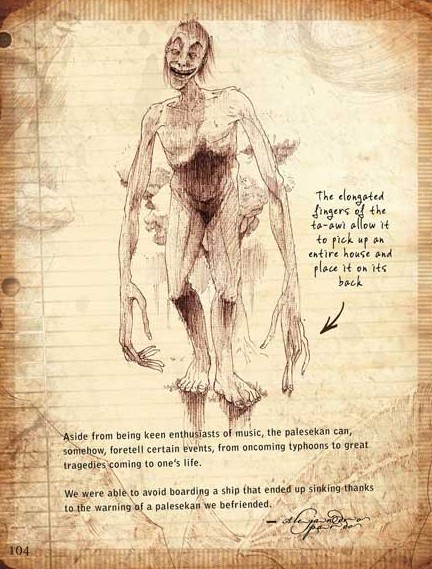
Komik artists from the 60’s and 70’s greatly impacted how some creatures in Philippine Mythology are seen. Did you make an attempt to stay close to the folk descriptions, or did you take some artistic liberties? Any examples?
BG: I think we all tried to put our own spin on it. If you look at the source materials…a lot of the creatures have similar descriptions ( like the Kapre and Ongloc which are described as tall dark men). If we just stuck to the descriptions in the books they would all look similar. We wanted to show the diversity of the creatures so we did take some liberties but we were careful to stay within the boundaries of the source material–meaning if you read the older books…our stuff could still pass.
And we had a lot if fun doing it as you can see from the output.
KB: I tried to stay away from the traditional as much as I can just so I can really add something, somewhat, new to the myth. My rendition of the classic aswang is a prime example.
MM: I always put my own spin on everything I do and I think every good artist should. In this particular project, I always think of little things to add to the drawings to make the creatures uniquely mine. For example, the original description of the Buwaya’s box is just a coffin that is strapped on its back. For me it doesn’t make sense for a majestic creature to be forced to wear a box and I don’t think any human is brave enough to strap it to that fearsome creature. And if it’s a more powerful god that strapped the box to the Buwaya, it will undermine the Buwaya’s power, he will just be a pet. So I made the box a part of the creature rather than a wearable item. And it’s amazing how Dave and Budj adjust the writing to accommodate the changes I made. Actually, they encourage us to get creative on the creature design which makes this project really enjoyable to do.
Ask your favorite book store in the Philippines about “The Lost Journal of Alejandro Pardo: Creatures & Beasts of Philippine Folklore”. If they don’t carry it, you should suggest they do. It comes with 125 pages of awesomeness and retails for ₱295. For those outside the Philippines, Summit Publishing has also made it available as a PDF from the Buqo Bookstore for $5.99USD. It will also be available at SUMMER KOMIKON April 16, 2016.
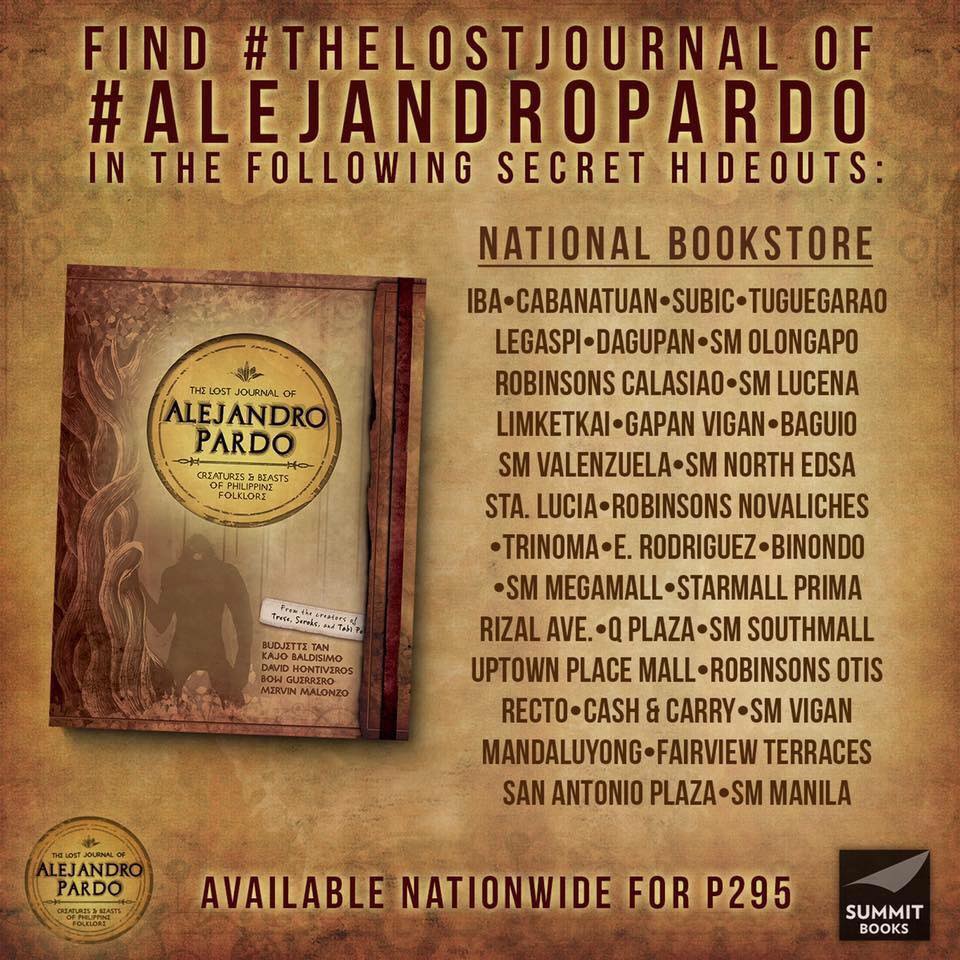
ALSO SEE: Creatures & Beasts | Writers of “The Lost Journal”
Jordan Clark is a Canadian born descendant of Scottish immigrants living on the homelands of the Lekwungen speaking peoples. His interest in Philippine myth and folklore began in 2004. Finding it difficult to track down resources on the topic, he founded The Aswang Project in 2006. Shortly after, he embarked on a 5 year journey, along with producing partner Cheryl Anne del Rosario, to make the 2011 feature length documentary THE ASWANG PHENOMENON – an exploration of the aswang myth and its effects on Philippine society. In 2015 he directed “The Creatures of Philippine Mythology” web-series, which features 3 folkloric beings from the Philippines – the TIKBALANG, KAPRE and BAKUNAWA. Episodes are available to watch on YouTube. Jordan recently oversaw the editing for the English language release of Ferdinand Blumentritt’s DICCIONARIO MITOLÓGICO DE FILIPINAS (Dictionary of Philippine Mythology) and is working on two more releases with fellow creators scheduled for release later this year. When his nose isn’t in a book, he spends time with his amazing Filipina wife of 20 years and their smart and wonderful teenaged daughter.


